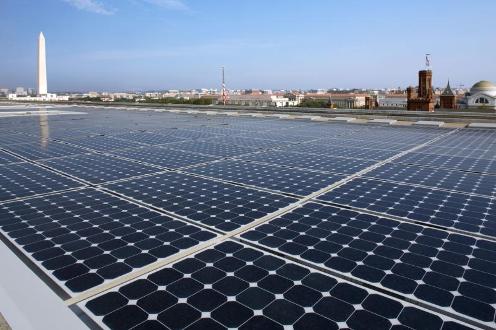
Ed. Note: Cross posted from the Energy Blog.
Across the country, the race is on to drive down the cost of solar energy. And a new challenge through the U.S. Department of Energy’s SunShot Initiative could help slash the costs even faster.
We are challenging cities and counties to compete nationwide to cut the red tape that can push up the price tags on solar energy projects.
One of the highest hurdles for would-be investors in residential and small commercial solar energy installations is navigating the differing and expensive administrative processes required to get their solar panels from the drawing board to the rooftop.
Today the Department of Energy announced a new challenge in which teams of local and regional governments compete for funds to help bring down administrative barriers to residential and small commercial photovoltaic (PV) solar installations by streamlining, standardizing and digitizing their administrative processes. The Rooftop Solar Challenge will also spur participating cities and states across the nation to enable innovative financing programs to help homeowners and entrepreneurs install solar energy systems on their homes and businesses.Up to 40 percent of the total cost of a solar energy system is the result of balance of system costs, which include the capital required to pay for siting, permitting, and installing a solar energy project and connecting it to the grid.
By challenging local governments to cut their upfront fees and paperwork and standardize their permitting processes, the Challenge will not only reduce the cost to homeowners and businesses of installing solar energy systems, but it will also save money and time for local governments already struggling with tight budgets.
Using the Administration’s “Race to the Top” model, the Rooftop Solar Challenge incentivizes local governments to find new ways to tackle old problems and use the best of those innovative solutions as models for other regions. To participate, cities and counties will build teams with other local governments in their state or region, as well as with other critical stakeholders such as their local utility and their state energy office, to develop a step-by-step plan for how they will meet the goals laid out in the Challenge.
The Rooftop Solar Challenge will encourage participating government teams to compete in four critical areas: standardizing permit processes, updating planning and zoning codes, improving standards for connecting to the grid and increasing access to financing. Each team must submit data, including information about their current permitting and grid interconnection processes to establish the baseline against which to measure the progress they make during the year of the Challenge.
The Rooftop Solar Challenge will make it easier for investors to capitalize on all of the benefits of solar energy technologies, support jobs for solar installers, create new opportunities for small solar companies across the country and help the U.S. remain a top competitor in this key renewable energy market.
The Rooftop Solar Challenge will be funded with $12.5 million as part of the SunShot Initiative, which aims to make solar energy cost-competitive with traditional forms of electricity by reducing the total installed cost of solar energy systems by 75 percent before decade’s end.
For more information and to follow the progress of the Initiative, visit the SunShot Initiative site.
Ramamoorthy Ramesh is the Director of the SunShot Initiative and Solar Energy Technologies Program


